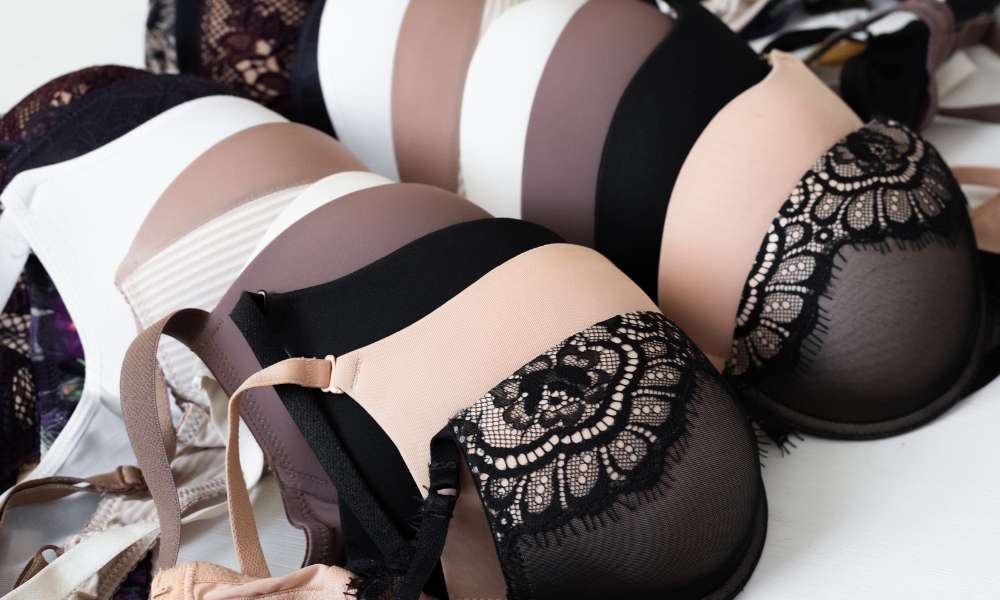Lingerie Guide: Style, Fit, Care, and Smart Investment
Explore a comprehensive lingerie guide that covers materials, fit, upkeep, trends, and buying strategies. Learn how fabric choice, construction, and proper sizing affect comfort and longevity, plus practical care tips and a pricing breakdown to help you build a versatile, confident lingerie wardrobe.

Lingerie Guide: Style, Fit, Care, and Smart Investment
Materials and construction: what to look for
The fabrics and workmanship behind lingerie determine how comfortable it feels and how long it lasts. Natural fibers such as cotton and silk breathe well and feel soft against the skin, while lace adds visual refinement. Modern synthetic blends — including microfiber and nylon-spandex mixes — are prized for resilience, stretch recovery, and the ability to hold shape. Premium pieces typically feature reinforced seams, strategic elastic placement, and careful finishing in stress points like straps, underwires, and hook-and-eye closures. These details reduce wear, improve support, and maintain fit through repeated use.
When shopping, inspect seams for neat stitching, look for smooth band construction, and check that elastic edges sit flat without rolling. High-quality materials may cost more upfront, but they often repay that investment by looking and performing better over time.
Finding the right fit: measurements and signs
Fit is the foundation of both comfort and a flattering silhouette. Bra size and body shape can shift due to weight changes, hormonal cycles, pregnancy, or aging, so periodic reassessment is important. Essential measurements include your band size (underbust), cup volume (bust), and overall proportions that influence styles that work best.
A correctly fitted bra should sit snugly on the band without pinching, lie level across the back, have cups that contain breast tissue without gaping or bulging, and have straps that support without digging in. Common indicators that a piece needs adjustment or replacement include straps that slip or cut in, a band that rides up, visible lines or bulges under clothes, or persistent discomfort. Professional fittings can clarify measurements and suggest styles that match your shape and needs.
Care and maintenance to extend lifespan
How you wash, dry, and store lingerie has a direct effect on its longevity. Delicate items benefit from hand washing in cool water with a mild detergent; this approach preserves elastic fibers and delicate trims. If machine washing is unavoidable, place garments in a mesh laundry bag and use a gentle cycle with cold water.
Avoid tumble drying and direct sunlight exposure; instead, reshape pieces and air dry them flat or on a padded hanger to preserve elasticity and color. Rotate items in your drawer to prevent repeated stress on a few favorites, and store bras with cups nested to maintain form. Small habits — like fastening hooks before laundering and avoiding fabric softeners on elastics — help protect construction and fit.
Trends and seasonal collections
Lingerie continues to evolve, balancing timeless motifs with contemporary demands. Classic elements like lace, embroidery, and satin remain staples, while minimalist, seamless designs cater to those seeking invisible support under clothing. Recent collections increasingly emphasize sustainability, using recycled fabrics, organic fibers, and low-impact dyes. Inclusivity is another major development: brands are expanding size ranges and offering adaptive designs to serve a broader range of bodies.
Comfort technologies — such as wireless support systems, wide bands, and memory-foam components — are becoming mainstream, enabling pieces that look elegant while prioritizing ease of wear. Seasonal drops often mix statement colors and patterns with wardrobe basics, so it’s easy to mix practical items with fashion-forward choices.
Investment and pricing guide
| Category | Entry Level | Mid-Range | Luxury |
|---|---|---|---|
| Basic Bras | $15-30 | $30-70 | $70+ |
| Specialty Bras | $25-45 | $45-90 | $90+ |
| Panties | $5-15 | $15-30 | $30+ |
| Full Sets | $35-75 | $75-150 | $150+ |
Prices, rates, or cost estimates mentioned in this article are based on the latest available information but may change over time. Independent research is advised before making financial decisions.
Building a versatile lingerie collection
A thoughtful wardrobe blends everyday reliability with occasional-showcase pieces. Start with neutral hues — nude, black, and white — in comfortable cuts that disappear under most outfits. Include at least one well-fitting everyday bra (or two, in rotation), several pairs of plain panties in durable fabrics, and a few period-appropriate or activity-specific items (sports bras, strapless options, or seamless pieces) to cover practical needs.
Once you have essentials, add statement items such as lace sets, bold colors, or unique silhouettes for special events or to express personal style. Consider lifestyle factors: if you exercise frequently, prioritize supportive sports bras; if you wear fitted tops, seamless or plunge bras are useful. Rotating and replacing items regularly keeps the collection functional and fresh.
Choosing pieces that match your life
Think of lingerie as both a functional foundation and a form of self-expression. Practical choices support daily comfort and garment longevity, while decorative pieces boost confidence and variety. When in doubt, try multiple sizes and styles — different brands interpret sizing uniquely, and what works for one body may not for another. Keep key criteria in mind: breathability, support, fit, and durability.
The lingerie landscape continually adapts to new fabrics, ethical production methods, and broader size inclusivity, offering options for every preference and budget. By focusing on quality materials, proper fit, careful care, and a balanced mix of basics and special pieces, you can build a lingerie collection that enhances comfort, appearance, and long-term value.






